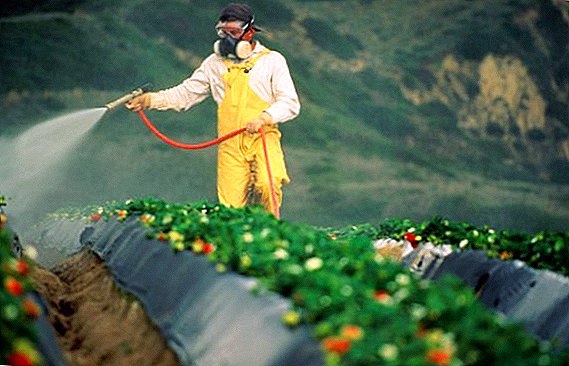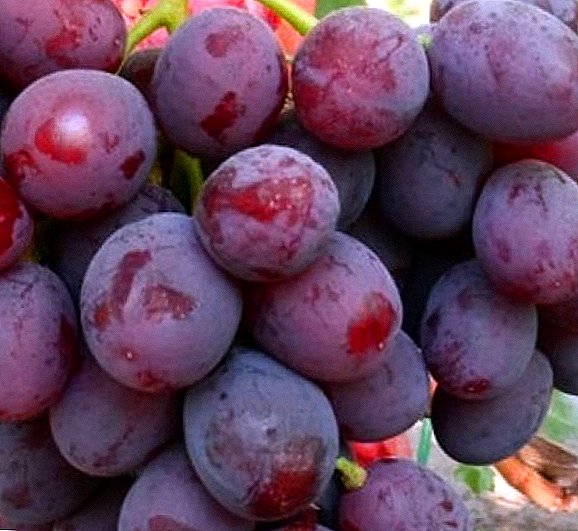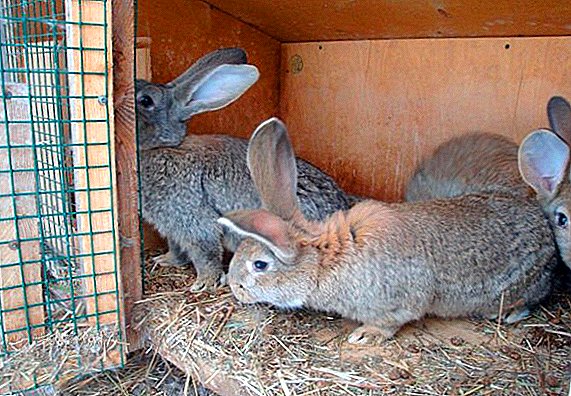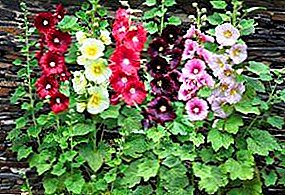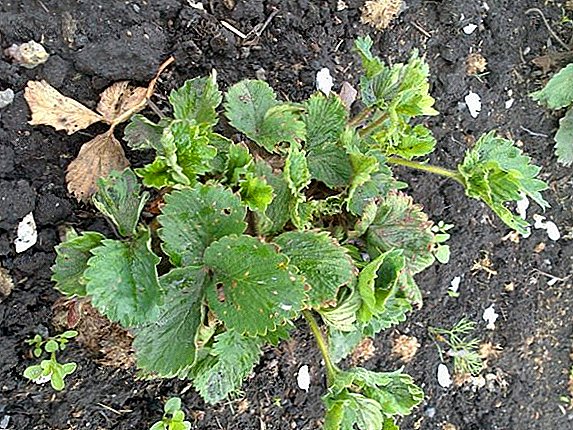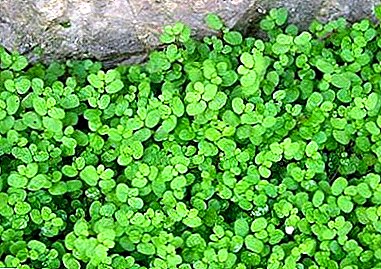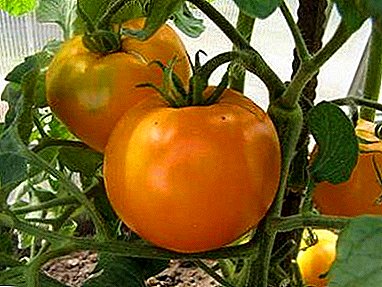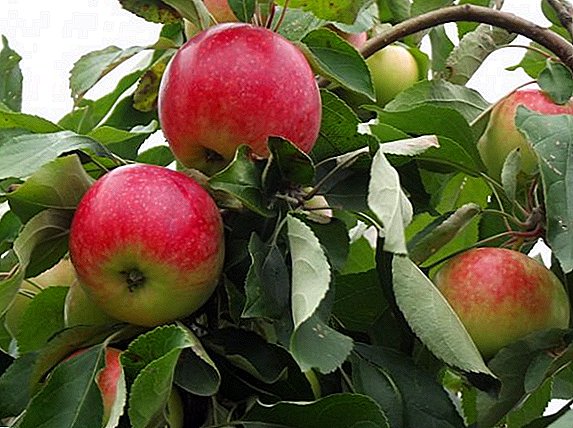 Apple trees - one of the main trees in the gardens. There are many varieties with different ripening and taste. Nevertheless, they are all a valuable storehouse of vitamins. However, in order to achieve a good harvest, a gardener needs to save trees from diseases and pests.
Apple trees - one of the main trees in the gardens. There are many varieties with different ripening and taste. Nevertheless, they are all a valuable storehouse of vitamins. However, in order to achieve a good harvest, a gardener needs to save trees from diseases and pests.
Melba's main diseases and their treatment
 Melba - quite famous variety of apple trees, famous for its incredibly tasty fruits and high yields. However, experienced gardeners are well aware of the problem of the poor resistance of this tree against diseases and pests, especially scab.
Melba - quite famous variety of apple trees, famous for its incredibly tasty fruits and high yields. However, experienced gardeners are well aware of the problem of the poor resistance of this tree against diseases and pests, especially scab.
For this reason, in order to be able to feast on juicy apples, it is necessary to closely monitor the condition of the tree, to detect the characteristic symptoms of the disease in time and to professionally respond to the emerging problem.
How to protect the apple tree from scab
External manifestations of scabindicating the need to sound the alarm, there are characteristic spots on the leaves, initially olive-green, later black and cracked.
Starting with foliage, the disease quickly spreads both to the ovary and to the fruit, affecting the whole tree, so it’s impossible to get rid of the scab on Melba without spending a huge amount of time and effort.
Much better to think about prevention. To this end, in the fall, immediately after harvest, the following procedures should be performed: remove dried fruit, cut off dead branches, trunk, if necessary, clean and whiten. Ground around the tree can be poured with urea (0.5 kg per bucket of water).
Important! All leaves, fallen from the apple, must be collected and removed or burned.
 Spring is also a good time for maintenance, but they should be until bud break. It is useful to spray the tree with a 1% solution of Bordeaux mixture. If desired, as soon as the apple tree has blossomed, it can be re-sprayed with Bordeaux or with a solution of “Zineba”, “Kaptan” or “Kuprozan”.
Spring is also a good time for maintenance, but they should be until bud break. It is useful to spray the tree with a 1% solution of Bordeaux mixture. If desired, as soon as the apple tree has blossomed, it can be re-sprayed with Bordeaux or with a solution of “Zineba”, “Kaptan” or “Kuprozan”.
After another two weeks, the last spraying is carried out, but in order to avoid burns, only a few branches should be treated with Bordeaux liquid and, having only made sure that there is no chemical reaction, spray the whole tree.
Scab usually begins to manifest itself at the end of May. Up to this point it is good to feed the apple tree with “Humate” or “Fitosporin-M”, then the application of numerous “chemistry” will not be needed in the future.
If the scab does hit the tree, the number of treatments per season can be increased to six.
How to cure a tree from powdery mildew
 Mealy dew It appears as a thin, off-white bloom on the leaves, which is easily erased at first, but then begins to thicken and darken. Panting without oxygen and moisture, the foliage begins to turn yellow, curl into tubes, dry out and fall. Ovaries also fall off.
Mealy dew It appears as a thin, off-white bloom on the leaves, which is easily erased at first, but then begins to thicken and darken. Panting without oxygen and moisture, the foliage begins to turn yellow, curl into tubes, dry out and fall. Ovaries also fall off.
To fight with mealy dewas with scab, it is more difficult than to provide preventive protection. Every week, an apple tree is treated with potassium permanganate, copper oxide, iron sulphate, Bordeaux mixture or special preparations (for example, Topaz has worked well), and if they are not on hand, use a soda ash solution.
You also need to be careful with the use of nitrogenous fertilizers, as their abuse can provoke a disease.
Important! At the first signs of disease, the affected leaves or ovary must be removed immediately.
Fighting fruit rot (moniliosis)
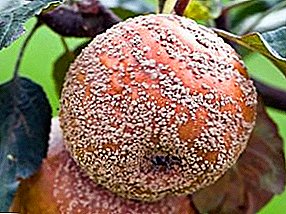 Fruit rot cause fungal mycelium contained in last year's dried apples. If such affected fruits are not removed from the tree in time, the mycelium moves from them to healthy branches, where it winters beautifully and in spring strikes young fruits immediately after tying.
Fruit rot cause fungal mycelium contained in last year's dried apples. If such affected fruits are not removed from the tree in time, the mycelium moves from them to healthy branches, where it winters beautifully and in spring strikes young fruits immediately after tying.
The disease begins with soft brown spots on apples, which grow rapidly, then white growths occur, the flesh of the fruit becomes brown and unsuitable for food, it falls.
Fruit Rot Treatment provides for spraying of "Quick", "Horus" and "Fundazole": the first - as soon as the leaves bloomed, the second - after the apple tree had blossomed, and the third - about three weeks before the harvest.
In addition, you must comply with the following rules of prevention:
- in the autumn it is necessary to dig up the trunk circle well;
- regularly collect fallen apples and immediately remove the fruits that rot in Melba;
- when harvesting apples do not allow them mechanical damage.
Cytosporosis plants
 Brown spots, similar to ulcers, appear on the bark of an apple tree. Increasing in size, they become reddish. The branches become brittle, on the cut you can see the characteristic dark threads of the mycelium.
Brown spots, similar to ulcers, appear on the bark of an apple tree. Increasing in size, they become reddish. The branches become brittle, on the cut you can see the characteristic dark threads of the mycelium.
Cytosporosis develops on the background of fertilizer deficiency and too abundant watering.
Treatment of the disease consists primarily of stripping wounds on the trunk to healthy tissue with subsequent treatment with copper sulphate (10-20 g per bucket of water) and smearing with garden pitch.
It is obligatory to export or burn cleaned bark and dried branches. This should be done in the spring, until the temperature rises above 15 ° C, when the pathogenic fungus begins to actively develop.
Before budding and after flowering, the apple tree is sprayed with HOM, and before flowering, with Fundazole. In the autumn, the tree is useful to feed phosphate and potash fertilizers.
Symptoms and treatment of a bacterial burn
 Characteristic signs of burn - the apple trees begin to curl and fall off the leaves, the apples shrivel and also fall.
Characteristic signs of burn - the apple trees begin to curl and fall off the leaves, the apples shrivel and also fall.
The disease begins with the poisoning of the soil and is often transferred by the gardener himself, or rather by his tools with which he cultivates infected and healthy patches of land or cuts off diseased and healthy branches. The disease can also be “brought” with a new plant.
Bacterial burn is almost impossible to fight. It is better to completely uproot one tree than to lose the whole garden.
In order to somehow protect oneself, one should avoid purchasing seedlings in unknown places, disinfect garden tools after each use and, of course, destroy pests, as they also spread the infection. For prevention, it is also possible in the spring to spray the land on the site with a solution of copper sulfate.
The main pests of apple trees, ways to combat malicious insects
Fruit trees are threatened not only by diseases, but also by all sorts of pests. So, the main pests of apple trees, including Melby, are moths, moths, tsveroyed, sawflies, scytworm and haws, whose dangerous effects can be judged by the names themselves. We will understand what to do with each of these insects.
Apple leafworm
 This little butterfly is unpleasant because it lays eggs on the young leaves of the tree, after which they curl into a tube, from which the name of the insect. Caterpillars, hatched, are able to eat the leaf completely, leaving only streaks.
This little butterfly is unpleasant because it lays eggs on the young leaves of the tree, after which they curl into a tube, from which the name of the insect. Caterpillars, hatched, are able to eat the leaf completely, leaving only streaks.
To fight with the leaflet can be different. Sometimes quite effectively physical destruction of the pest (burning folded leaves or attracting insect-eating birds to the garden) or creating special traps that prevent it from reaching the tree.
Can be used to kill insects folk methods: tobacco infusion, decoction of wormwood, potato or tomato tops.
And yet most reliably get rid of butterflies and caterpillars chemical preparations. This method is not very safe, so you need to resort to it only in emergency cases - if the apple tree is affected by the pest strongly enough.
Important! The sheet worm is able to easily adapt to the action of various toxins, so toxic chemicals must be constantly changed.Since the moth caterpillars are able to move very quickly from tree to tree, it is necessary to process not only the diseased apple tree, but all the others.
Codling moth
 Butterflies of this insect, in contrast to the leafworm, prefer to lay eggs in flower buds. Subsequently, the caterpillar gnaws a seed, gnaws out and goes to the next fruit, in the meantime the apple cannot ripen and falls off.
Butterflies of this insect, in contrast to the leafworm, prefer to lay eggs in flower buds. Subsequently, the caterpillar gnaws a seed, gnaws out and goes to the next fruit, in the meantime the apple cannot ripen and falls off.
Did you know? One larva in its life can destroy 2-3 apples, while the insect is so prolific that the offspring of one individual can destroy up to a thousand fruits.
To prevent moth infestation It is necessary to regularly collect the carrion, after gently shaking the tree so that the damaged apples do not remain on it, and twice a year - in autumn and spring - to clean the old bark, in which cocoons can remain.
In the stem there are natural enemies among insects. This can be used by planting as many flowering plants as possible on the site to attract such "helpers." It is noticed that the moth does not like the smell of tomatoes, so it is useful to plant them nearby. Adhesive tapes for flies are also used to control moths.
Apple Blossom
 These bugs, as the name implies, destroy the bud, gnawing in it a cavity for laying eggs.
These bugs, as the name implies, destroy the bud, gnawing in it a cavity for laying eggs.
Preventive actions to combat this pest are similar to those described above - peel bark. Besides good to whiten the trees with a solution of freshly lime (1.5-2 kg per bucket of water).
At the same time, it is recommended to leave one tree untreated and it is on it to use mechanical means of fighting the beetle (shake them on the litter and drown them in a bucket of kerosene).
You can also spray the buds with "chlorophos".
Apple sawfly
This pest causes the fall of the ovary much earlier than it reaches the moth. Having gorged on, the larva gets out of the fruit, falls to the ground, digs in it for 5-15 cm, where it makes a cocoon and winters.
To combat pest An apple tree before and after flowering can be sprayed with Chlorofos or Karbofos.
Apple shchitovka
The insect feeds on the sap of the tree, which is manifested by small dark brown growths on the bark. A large number of shitovki can stop the growth of the apple tree, the tree dries and resets color.
Did you know? The shield is very tenacious, its eggs are able to tolerate a thirty-degree frost, and the protective shell makes the insect insensitive to the action of various preparations.
 As a preventive one should clean the tree trunks from weeds and young shoots, cut off dry branches, clean the bark, dig up the ground for better penetration of fertilizer into it, immediately destroy the shields found on apple trees.
As a preventive one should clean the tree trunks from weeds and young shoots, cut off dry branches, clean the bark, dig up the ground for better penetration of fertilizer into it, immediately destroy the shields found on apple trees.For chemical processing trees in the autumn use copper sulfate, in the spring - "Nitrafen".
A few days after flowering, the insect larvae enter the active phase, therefore the tree should be treated with contact insecticides, for example, "Decis". The procedure is repeated during the growing season twice or three times.
Hawthorn
This pest weaves a nest from a web in the fallen leaves or on a tree, where it lays eggs for the winter, up to 500 pieces each. In spring, the larvae hatch and eat literally all the young parts of the tree.
Eggs overwinter in fallen leaves, fastened with cobwebs like a nest. There may be nests and trees. In the spring, the hatched larvae destroy leaf and flower buds, young greens and flowers.
Did you know? Unlike the scythe, the hawthorn, fortunately, does not have a strong vitality, its appearance can cease for several years, after which it can arise again.
 The hawthorn does not cause such massive damage to the trees as the moth, moth and other pests, so the fight against it is not so urgent - just care for the tree, destroy the insect nests found, and in summer, when the caterpillars can be seen on the leaves, treat the apple tree with insecticides.
The hawthorn does not cause such massive damage to the trees as the moth, moth and other pests, so the fight against it is not so urgent - just care for the tree, destroy the insect nests found, and in summer, when the caterpillars can be seen on the leaves, treat the apple tree with insecticides.

